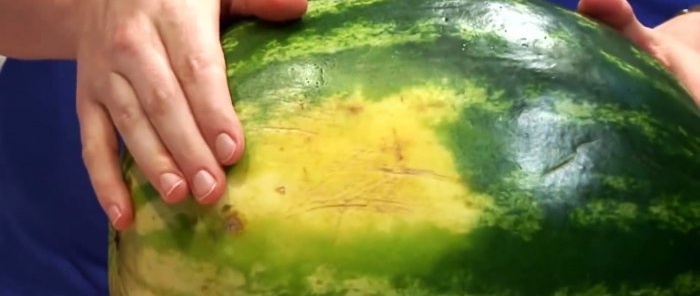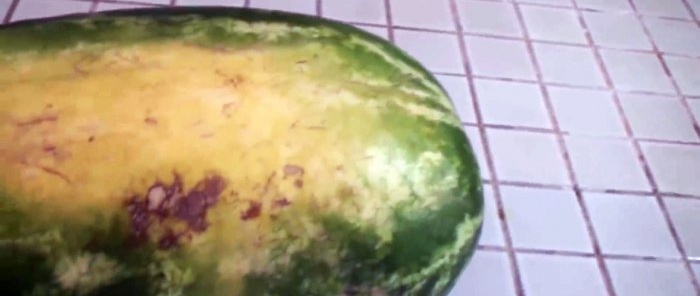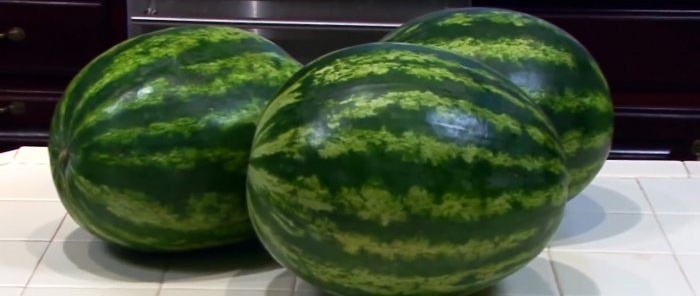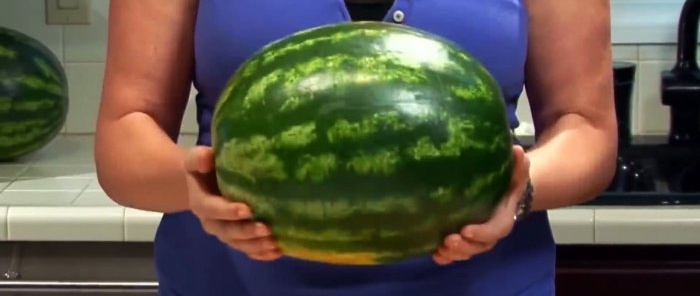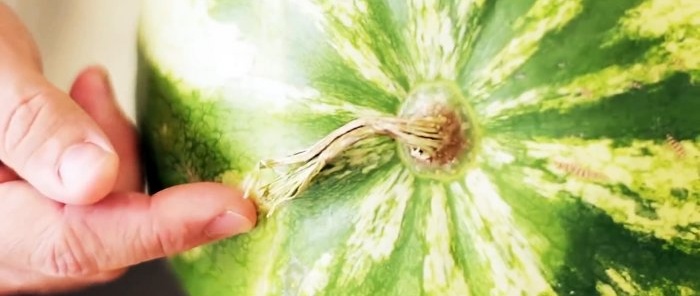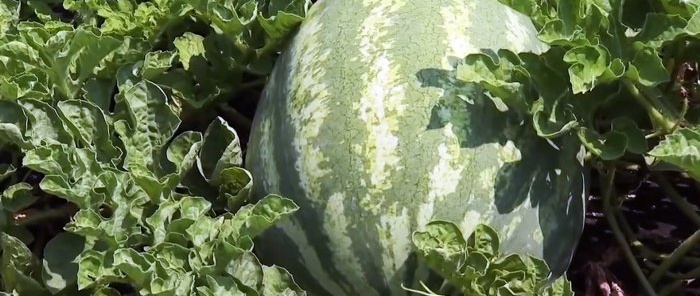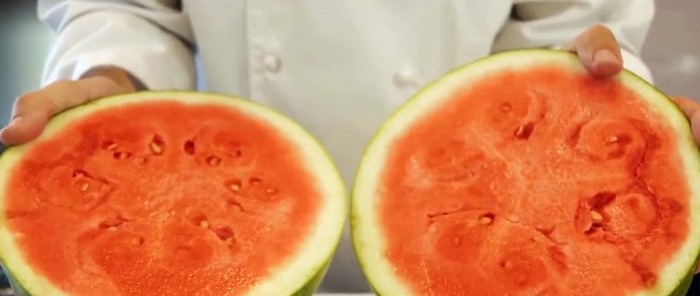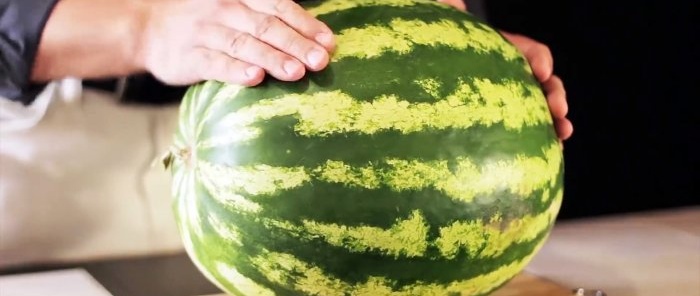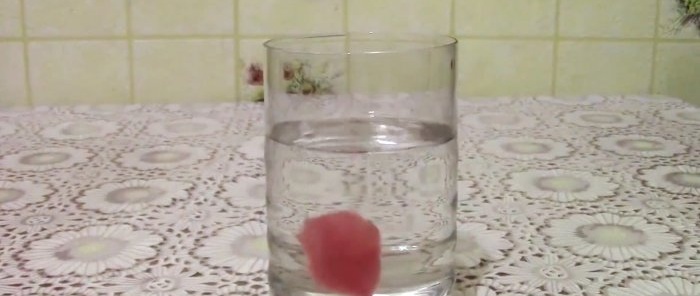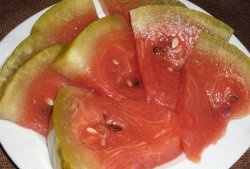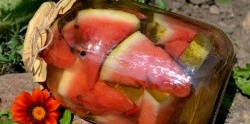8 signs that will help you choose a sugar watermelon with almost 100% probability
To buy a ripe and very sweet watermelon, you should use several proven tips when choosing it. The more requirements it meets, the tastier and more sugary it will be.
A watermelon with a small light field spot will be tastier. If it is large, then the fruit has a large area in contact with the ground, so it does not receive much light for an even increase in sweetness. The size of the spot is not a sign of ripeness, it only indicates the taste.
A brown mesh can be seen on the skin of the field spot. The thicker and more saturated it is, the more actively the watermelon was pollinated by bees. Due to pollination, it ripens more aromatically and tastes better.
Watermelon has male and female fruits. Round female ones are considered sweeter. In fact, gender has no effect on sugar content, so there is no point in choosing exclusively elongated or round fruit.
If in the total mass of large watermelons you come across small ones, it is better not to buy them.In this case, the small size is explained by the fruit not receiving enough sunlight and nutrients. Watermelons of medium and large size up to 10-12 kg will be the best to taste.
A dry tail indicates that the watermelon was picked completely ripe. In fact, a fruit with a fresh green stalk can be sweet, so it cannot be categorically rejected. However, a dry ponytail is always better. There is also a catch. A dry tail can also appear on an unripe watermelon that has lain for a couple of months from the moment it was picked until it was purchased.
Delicious watermelons have stripes on their skin that are always contrasting and pronounced. If they are barely visible, it is better not to buy such a fruit, it is not sweet.
A ripe watermelon has a smooth rind. If it is still rough, this is a sign of immaturity. In an overripe, wilting watermelon, it becomes lumpy. The criterion for assessing ripeness based on the peel is quite accurate.
Also a very accurate method for assessing ripeness is the depth of sound from tapping the peel. If it is ringing, then the watermelon is ripe and sweet. In an unripe fetus it is deaf.
Having selected a watermelon according to the listed criteria, you can expect that it will be sweet and juicy. However, there is a risk of breaking into fruit that has been grown and brought to maturity with growth stimulants. You can calculate it by throwing a piece of pulp into water. If it turns pink, then it is better to throw away the watermelon. In a fruit ripened under normal conditions, the pulp will not color the water, it will only make it slightly cloudy.
field spot
A watermelon with a small light field spot will be tastier. If it is large, then the fruit has a large area in contact with the ground, so it does not receive much light for an even increase in sweetness. The size of the spot is not a sign of ripeness, it only indicates the taste.
Mesh on the field spot
A brown mesh can be seen on the skin of the field spot. The thicker and more saturated it is, the more actively the watermelon was pollinated by bees. Due to pollination, it ripens more aromatically and tastes better.
Half a watermelon
Watermelon has male and female fruits. Round female ones are considered sweeter. In fact, gender has no effect on sugar content, so there is no point in choosing exclusively elongated or round fruit.
Berry size
If in the total mass of large watermelons you come across small ones, it is better not to buy them.In this case, the small size is explained by the fruit not receiving enough sunlight and nutrients. Watermelons of medium and large size up to 10-12 kg will be the best to taste.
Tail
A dry tail indicates that the watermelon was picked completely ripe. In fact, a fruit with a fresh green stalk can be sweet, so it cannot be categorically rejected. However, a dry ponytail is always better. There is also a catch. A dry tail can also appear on an unripe watermelon that has lain for a couple of months from the moment it was picked until it was purchased.
Stripes
Delicious watermelons have stripes on their skin that are always contrasting and pronounced. If they are barely visible, it is better not to buy such a fruit, it is not sweet.
Peel
A ripe watermelon has a smooth rind. If it is still rough, this is a sign of immaturity. In an overripe, wilting watermelon, it becomes lumpy. The criterion for assessing ripeness based on the peel is quite accurate.
Tapping sound
Also a very accurate method for assessing ripeness is the depth of sound from tapping the peel. If it is ringing, then the watermelon is ripe and sweet. In an unripe fetus it is deaf.
Having selected a watermelon according to the listed criteria, you can expect that it will be sweet and juicy. However, there is a risk of breaking into fruit that has been grown and brought to maturity with growth stimulants. You can calculate it by throwing a piece of pulp into water. If it turns pink, then it is better to throw away the watermelon. In a fruit ripened under normal conditions, the pulp will not color the water, it will only make it slightly cloudy.
Watch the video
Similar master classes
Particularly interesting
Comments (1)

